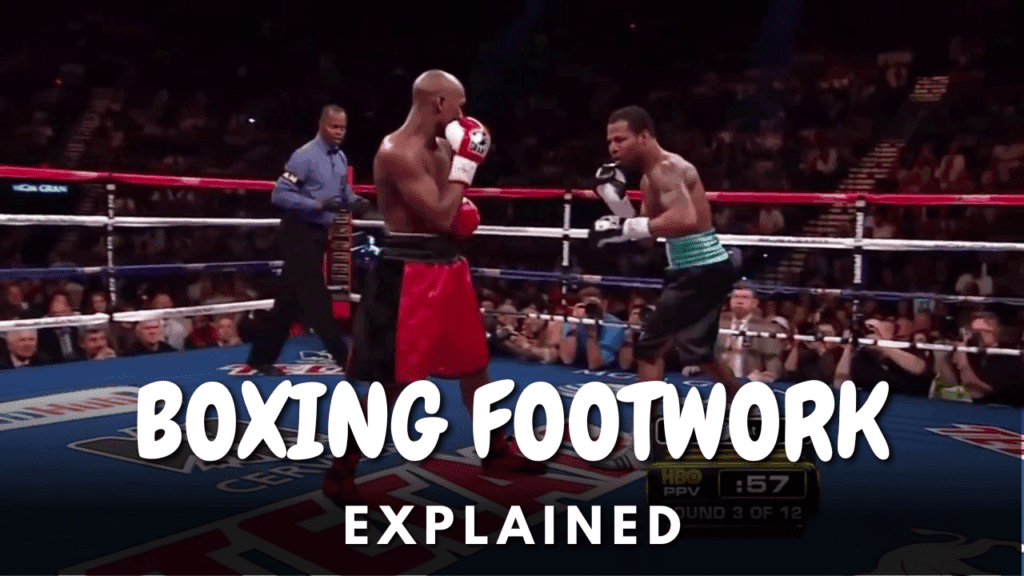The first time I stepped into a boxing gym, I thought throwing a punch was simple — just ball up your fist and swing, right? Man, was I wrong! After my coach laughed (kindly) and corrected my flailing attempts, I discovered that a proper punch is more like a full-body symphony than a single note.
Whether you’re stepping into the ring for the first time or looking to refine your technique, mastering the proper way to throw a punch is essential for both effectiveness and safety.
Did you know that a professional boxer’s punch can generate over 1,000 pounds of force? That’s enough to crush a watermelon! But this power doesn’t come from arm strength alone — it’s about whole-body mechanics and precise technique. Let’s break down the fundamentals that will transform your punches from amateur swings to precise, powerful strikes.
It All Starts With Your Feet
Think of your body as a whip, with your feet as the handle. To get that devastating crack at the end, the movement has to start at the base. Contrary to what most beginners think, throwing a powerful punch actually begins with your foot placement, also known as your “stance.”
Your stance keeps you balanced and firmly planted while creating momentum to throw effective punches. The right technique makes all the difference in:
- Your accuracy and target accuracy
- How you generate power in each punch
- Your speed and overall agility
- How well you can defend while attacking
Setting Up Your Boxing Stance
Imagine a square on the floor and position your feet in opposite corners at the front and back:
- For Orthodox stance (if you’re right-handed): Place your left foot forward and right foot back
- For Southpaw stance (if you’re left-handed): Place your right foot forward and left foot back
Keep your knees slightly bent and flexed to ensure you have some bounce in your step, and raise your back heel slightly so the weight rests primarily on the ball of your foot.
Finding what works best for you takes patience and practice—but getting this foundation right is crucial for everything that follows.
Read More: How to Get Into a Boxing Stance

Keeping Your Guard Up
I once saw a promising amateur fighter get knocked out cold simply because he dropped his guard for a few seconds. When throwing any punch, your non-punching hand should always remain in guard position. This serves two critical purposes:
- It protects your face and body when you’re exposed during a punch
- It sets up your arm for an immediate counter-punch
When in guard position, position your lead hand in front, between your eye and chin. Hold your rear hand close to your ear and chin (as if holding a telephone). Always remember to keep the non-punching hand firmly in guard until your punching hand returns.
The Five Primary Punches
Boxing relies on five fundamental punches, each serving a distinct purpose:
How to Throw a Jab

The jab is like the doorbell before you enter — it helps establish range, position, and sets up power shots.
Proper Jab Technique:
- Maintain balanced stance with weight evenly distributed
- Generate momentum by shifting weight slightly forward (ideally you want to step forward with the jab)
- Let the motion travel from your back foot, through your hips, and into your punch
- Extend the punch with elbow tucked, wrist square, and fist straight
- Snap your hand straight back into guard position immediately after impact
The jab should become your go-to punch. You should throw at least two-three jabs for every power punch during training. It’s excellent for maintaining distance while setting up more powerful combinations.
How to Throw a Cross

The cross is like your home run swing — one of your most powerful punches and a potential knockout blow.
Keys to an Effective Cross:
- Push off your back foot, allowing motion to travel through your hips and into the punch
- Rotate your body to achieve full extension
- “Turn the punch over” by keeping your wrist square and connecting with your first two knuckles
- Return your hand straight back to guard position immediately
Think of this as a sniper shot, it’s precise and needs to hit, you can’t throw it nearly as often as your jab. If you throw too many of these and they don’t land, you’ll gas out quickly.
How to Throw a Hook

The hook can work as a power punch (like the cross) or as a surprise punch if it’s a lead hook (so called check hook)
Hook Technique Fundamentals:
- Use your core for power generation
- Can be thrown as either a “Lead Hook” or “Rear Hook” depending on which hand you use
- Keep your elbow at approximately 90 degrees throughout the motion
A well-timed hook is often unexpected by opponents and can be one of your most effective weapons in close-range fighting.
How to Throw an Uppercut

The uppercut is designed to cut through your opponent’s guard like a shovel digging upward under a fence.
Uppercut Execution:
- Start in your guard position with slight bend in the knees
- Drive upward from your legs through your core
- Keep your elbow tucked and pointed downward initially
- Rotate your palm to face you as you drive upward
- Aim to connect with your first two knuckles
The uppercut is particularly effective when your opponent is hunched forward or has their guard positioned high to block hooks and crosses.
How to Throw a Rip

The rip sits between a hook and an uppercut, targeting the torso. A left rip (liver shot) is often enough to end fights.
Executing the Rip Effectively:
- Change levels slightly by bending your knees
- Twist your torso to explode upwards into the punch
- Target the slightly below the rib cage on the side of your opponent’s body
- Drive through with your hips for maximum power
I’ve seen entire matches turn around because of a few well-placed body shots!
Read More: Most Effective Boxing Combinations
Common Mistakes Beginners Make
1. Incorrect Fist Formation
DO NOT tuck your thumb into your fist. Start with an open hand, bend your fingers down, and rest your thumb on top.
Why This Matters:
- Tucking your thumb under your fingers risks breaking it upon impact
- Proper fist formation protects your hand and increases punching power
2. Lack of Balance
When you’re new to boxing movement, your stance can easily shift improperly.
Balance Correction Tips:
- Take a second after every few punches to reset your stance
- Avoid stances that are too wide or too narrow
- Stay on the balls of your feet for better mobility
Think of your stance like a tripod for a camera — it needs to be stable but adjustable, and if it’s not set right, everything that follows will be shaky.
3. Bending at the Wrist
Always keep your fist square to your wrist. If your fist is angled slightly up or down, you risk serious injury to your wrist joint and may miss your target.
4. Punching at the Incorrect Angle

Always aim to land your punches by making contact with the knuckles on your pointer finger and middle finger.
Benefits of Proper Contact Points:
- Ensures your punch lands with a square wrist
- Connects with the flattest and strongest part of your fist
- Minimizes risk of injury and maximizes impact
This is very important not only for punch power but for safety. A very high amount of boxing related injuries come from breaking the bones connected to your weaker knuckles.
Putting It All Together
Learning to throw a proper punch takes time and consistent practice. Remember that technique always trumps raw power – a technically sound punch will generate more force and cause less injury than wild swinging.
Key Takeaways:
- Start with your stance — this is the foundation of everything
- Keep your guard up at all times with your non-punching hand
- Master the five basic punches one at a time
- Generate power from the ground up — legs, hips, torso, shoulders, arms
- Avoid common beginner mistakes by focusing on proper form before power
If you’re looking to get started as a boxer, check out the video below:



